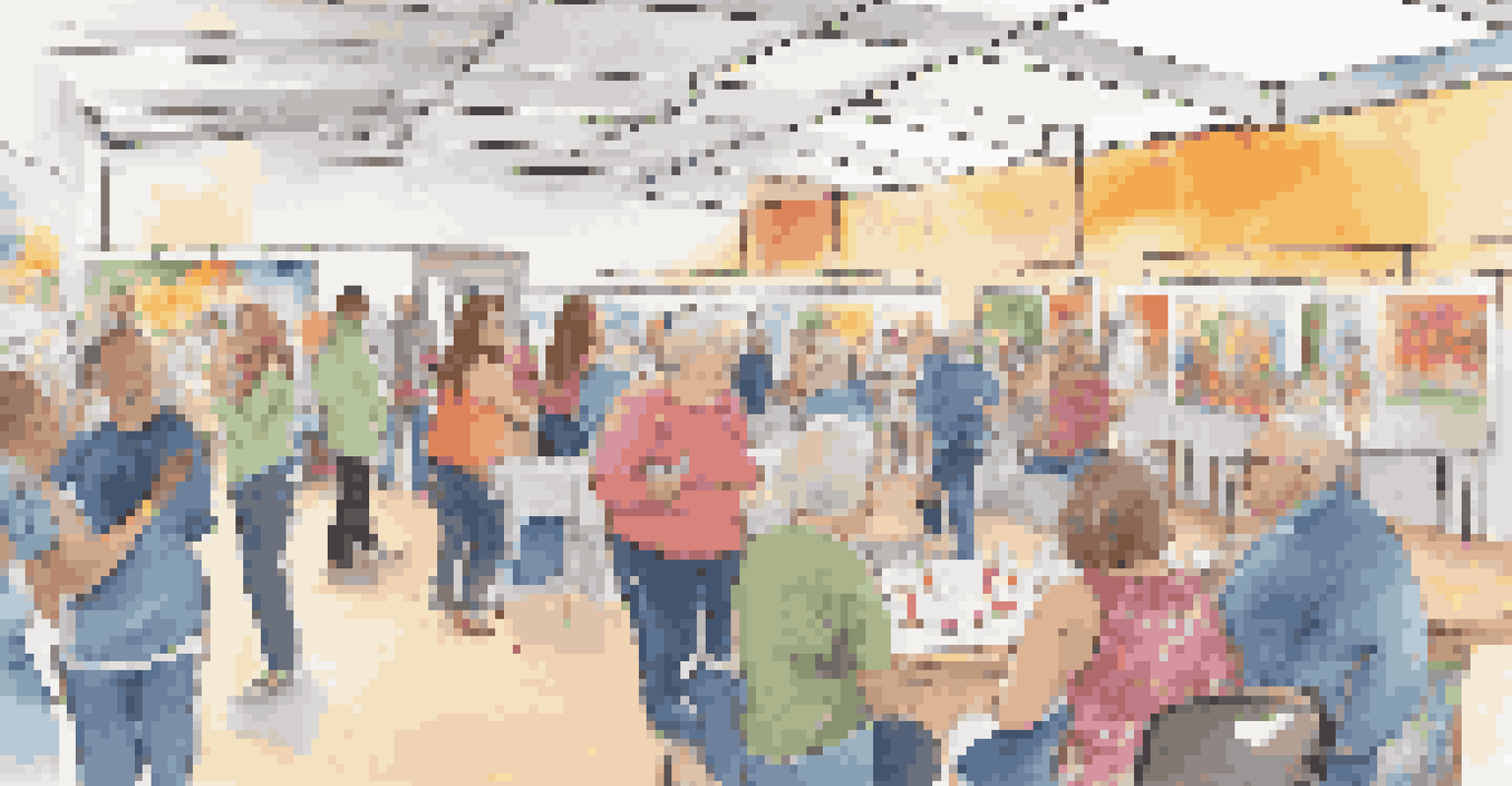The Role of Community in Chronic Pain Awareness and Support

Understanding Chronic Pain and Its Challenges
Chronic pain affects millions, making daily tasks daunting. It's not just a physical ailment; it can impact emotional well-being, relationships, and overall quality of life. Many people feel isolated in their struggle, leading to feelings of hopelessness and frustration.
The greatest glory in living lies not in never falling, but in rising every time we fall.
Awareness of chronic pain is crucial because it helps demystify the condition. When communities understand what individuals with chronic pain experience, it reduces stigma and fosters empathy. This understanding encourages supportive interactions between friends, family, and even strangers.
Emphasizing the social aspect of chronic pain highlights the need for community engagement. By sharing experiences and challenges, individuals can find strength in numbers, creating a network of support that can uplift and empower those suffering from chronic pain.
The Power of Shared Experiences in Community
Sharing personal stories within a community can be incredibly healing. When individuals open up about their pain, they often discover that others share similar experiences, creating a sense of belonging. This connection can validate feelings and provide comfort during difficult times.

Support groups, both online and offline, serve as safe spaces for individuals to express their struggles. These gatherings can lead to friendships and alliances that extend beyond the meetings, fostering a more extensive support network. People often find that they can relate to others in ways they never expected.
Chronic Pain Affects Lives Deeply
Chronic pain not only impacts physical health but also emotional well-being, relationships, and overall quality of life.
Moreover, shared experiences can lead to collective advocacy. When a community comes together, they can raise awareness about chronic pain on a larger scale, influencing public policy and healthcare practices. This unity can make a powerful statement about the importance of recognizing and addressing chronic pain.
Creating Awareness Through Community Initiatives
Community initiatives play a vital role in raising awareness about chronic pain. Events such as workshops, seminars, and fundraisers can educate the public and help debunk myths surrounding the condition. These initiatives often aim to inform not only those who suffer from chronic pain but also their families and friends.
Alone, we can do so little; together, we can do so much.
Additionally, social media campaigns can amplify these efforts. By sharing information and personal stories online, communities can reach a broader audience, sparking conversations that might not happen otherwise. Hashtags and online challenges can make participation engaging and accessible for everyone.
Collaborating with local businesses and organizations can further enhance these initiatives. By partnering with healthcare providers or wellness centers, communities can offer resources and support systems that directly benefit those living with chronic pain. This collaborative approach creates a ripple effect, spreading awareness far and wide.
The Role of Empathy in Building Support Networks
Empathy is the cornerstone of any supportive community. When individuals make an effort to understand the pain of others, it fosters a nurturing environment. This foundation encourages open dialogue, where individuals feel safe expressing their struggles without fear of judgment.
Practicing empathy goes beyond just listening; it involves actively engaging with the experiences of those in pain. Simple gestures, like checking in or offering assistance, can have a profound impact on someone’s day. These small acts help build trust and strengthen community bonds.
Community Empowers Through Connection
Shared experiences within a supportive community can foster resilience and create networks that uplift individuals facing chronic pain.
Furthermore, empathy can inspire proactive support. When people feel understood, they are more likely to seek help, whether through therapy, group meetings, or other resources. This willingness to reach out can lead to healthier coping strategies and a stronger sense of community.
Advocacy and Community Empowerment
Community empowerment is essential for advocating for chronic pain awareness. When individuals come together to voice their concerns, they can influence change in healthcare policies and practices. Empowered communities can demand better treatment options and more resources for pain management.
Advocacy often begins at the grassroots level. Local organizations can mobilize individuals to participate in awareness campaigns, lobby for legislative changes, and create educational programs. This grassroots approach can lead to significant shifts in how chronic pain is perceived and treated.
Moreover, empowered communities can provide a platform for individuals to share their stories with decision-makers. By amplifying their voices, they can ensure that the needs of those living with chronic pain are prioritized in public discourse. This collective effort can lead to transformative changes in society.
The Digital Community: A New Frontier for Support
In today's digital age, online communities have emerged as vital support networks for those suffering from chronic pain. Social media platforms, forums, and dedicated websites allow individuals to connect with others across the globe. This virtual space can be a lifeline for many who may not have access to local support.
Online communities provide a unique opportunity for anonymity, allowing individuals to share their stories and seek advice without fear. This can be particularly beneficial for those who feel uncomfortable discussing their pain in person. Virtual support groups can also offer flexibility, accommodating different schedules and lifestyles.
Digital Spaces Enhance Support Networks
Online communities provide essential support and resources, allowing individuals to connect and share experiences globally.
Furthermore, the digital community allows for the sharing of resources and information quickly. Members can post articles, research studies, and personal experiences that can educate and inspire others. This exchange of knowledge contributes to a more informed community, better equipped to navigate the challenges of chronic pain.
Building Resilience Through Community Support
Resilience is key for individuals dealing with chronic pain, and community support plays a significant role in fostering it. When people feel supported, they are more likely to persevere through tough times. A strong community can provide the encouragement needed to keep moving forward, despite the challenges.
Supportive relationships can help individuals develop coping strategies that enhance their resilience. Through sharing techniques and resources, community members can learn from one another’s experiences. This shared knowledge creates a toolbox of strategies that individuals can use in their daily lives.

Ultimately, building resilience through community support leads to a more empowered individual. Those who feel connected are often more proactive about seeking help, advocating for their needs, and maintaining a positive outlook. This collective resilience can transform not just individuals, but entire communities.